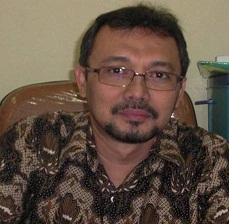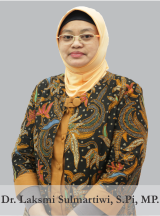Frozen Cuttlefish (Sepia officinalis) Production Process with Contact Plate Freezing Method at PT. Karya Mina Putra, Rembang, Central Java
Downloads
Cuttlefish is widely consumed by the public because it has a soft meat texture and high nutritional content. This makes the cuttlefish one of the mollusca that is a source of protein in addition to squid and octopus. The disadvantage of cuttlefish is that it is prone to deterioration in quality. One effort to prevent quality deterioration in cuttlefish is by freezing. The purpose of the implementation of this Field Work Practice is to decide the production process of frozen cuttlefish (Sepia officinalis) using the Contact Plate Freezing (CPF) method and to know the obstacles that occur in the production process. Field Work Practice was held in PT. Karya Mina Putra, Rembang, Central Java. The stages of the frozen cuttlefish production process at PT. Mina Putra's work includes the reception of raw materials, weighing I and sorting, labeling I, weighing II, washing, pan preparation, freezing, glazing, packaging and labeling II, storing in cold storage, and loading. The freezing process is carried out by the Contact Plate Freezing (CPF) method for 6 hours until the temperature reaches -40 ° C. The obstacle in the production process of frozen cuttlefish is there was a Contact Plate Freezing (CPF) machine damage and there are some employees who do not apply the SOP applied to prevent cross-contamination of the product.
Amiarsi, D. & Mulyawanti, I. (2016). Pengaruh metode pembekuan terhadap karakteristik irisan buah mangga beku selama penyimpanan. Jurnal Hortikultura, 23(3):255-262.
Hui, Y. H. & Sherkat, F. (Eds). (2005). Handbook of food science, technology, and engineering. Boca Raton: CRC Press.
Indah, F. (2004). Pengawasan mutu pembekuan udang jari (Penaeus indicus) di PT. Adijaya Guna Satwatama, Kabupaten Cirebon, Jawa Barat. Semarang: Universitas Katolik Soegijapra-nata.
Junianingsih, I. (2015). Proses pemindangan ikan layang (Decapterus sp) di Desa Jangkar Kabupaten Situbondo. Samakia: Jurnal Ilmu Perikanan, 6(1):65-72
Naimah, H. & I. Junianingsih. (2014). Proses pembekuan ikan katamba (Lethrinus lentjan) produk WGGS (whole gilled guted scaled). Samakia: Jurnal Ilmu Perikanan, 5(2):80-93.
Rahmat, M. R. (2015). Perancangan cold storage untuk produk reagen. Jurnal Ilmiah Teknik Mesin, 3(1):16-30.
Ramaswamy, H. S. & Marcotte. (2005). Food processing: principles and applications. CRC Press.
Sahubawa, L. & Ustadi. (2014). Teknologi pengawetan dan pengolahan hasil perikanan. Yogyakarta: Gajah Mada University Press.
Sasmita, K. I. (2019). Penerapan metode contact plate freezer (CPF) pada pembekuan udang windu (Penaeus monodon) di PT. Holi Mina Jaya, Rembang, Jawa Tengah. Surabaya: Fakultas Perikanan dan Kelautan Universitas Airlangga.
Savira, A. D. R. (2018). Proses (Aluterus monoceros) produksi ikan unicorn leather jacket beku dengan metode CPF (contact plate freezing) di PT. Karya Mina Putra Rembang Jawa Tengah. Surabaya: Fakultas Perikanan dan Kelautan Universitas Airlangga.
Siburian, E.T., Dewi, P., & Martuti, N. K. T. (2012). Pengaruh suhu dan waktu penyimpanan terhadap pertumbuhan bakteri dan fungi ikan bandeng. Unnes Journal of Life Science, 1(2):101-105.
Suseno. (2003). Prinsip pembekuan perikanan. Jakarta: Penebar Swadaya.
Vanhaecke, L., Verbeke, W., & De Brabander, H. F. (2010). Glazing of frozen fish: analytical and economic challenges. Analytica Chimica Acta, 672(1-2):40-44.
Widiastuti, I., Herpandi, M. Ridho, & Nafa Y. A. (2019). Karakteristik sotong (Sepia recurvirosta) asap yang diolah dengan berbagai konsentrasi asap cair. Jurnal Pengolahan Hasil Perikanan Indonesia, 22(1):24-32.
Yusal, Y. (2017). Tinjauan etika terhadap penggunaan freon untuk mesin pendingin dalam filsafat ilmu. Jurnal Inovasi Pendidikan Fisika dan Riset Ilmiah, 1(1):29-36.
Zulfikar, R. (2016). Cara penanganan yang baik pengolahan produk hasil perikanan berupa udang. Jurnal Aplikasi Teknologi Pangan, 5(2):29-30.
Copyright (c) 2021 Journal of Marine and Coastal Science

This work is licensed under a Creative Commons Attribution-NonCommercial-ShareAlike 4.0 International License.













